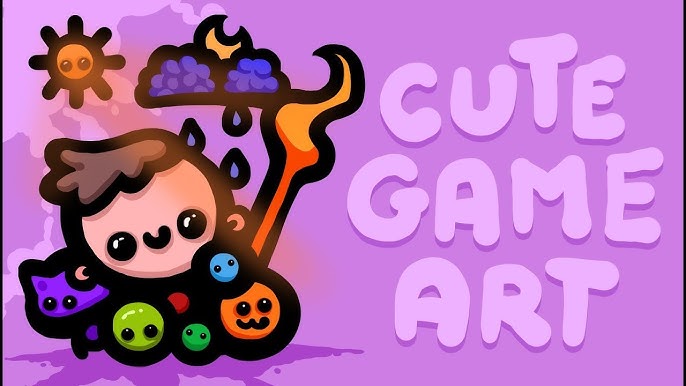Cute game characters are meticulously designed to evoke feelings of affection, warmth, and a desire to protect or nurture. Their appeal is often rooted in specific visual and behavioral cues that tap into innate human responses.
Key Design Principles for Achieving Cuteness
Several core elements consistently contribute to a character's perceived cuteness:

- Neoteny (Infant-like Features): This is paramount. Characters often exhibit features associated with babies and young animals:
- Large Head: Disproportionately large head relative to the body.
- Big Eyes: Large, often round or oval eyes, typically set wide apart and low on the face. Pupil size can also be exaggerated.
- Small Nose and Mouth: These features are usually diminutive and simple.
- Rounded Shapes: Soft, curved lines and rounded body forms are preferred over sharp angles. Chubby or plump physiques enhance this.
- Facial Expressions: Expressiveness is key. Wide-eyed innocence, joyful smiles, slight pouts, or blushing cheeks are common. Simplicity in expression often makes them more universally understood and endearing.
- Color Palette: Bright, soft, or pastel color palettes are frequently employed. Clean and simple color schemes aid in conveying an approachable and non-threatening image.
- Proportions and Stature: Smaller stature generally contributes to cuteness. Short limbs and a compact body are typical.
- Movement and Animation: Animations often feature bouncy, light, slightly clumsy, or playful movements. Exaggerated but smooth motions can amplify charm.
- Sound Design: Higher-pitched voices, endearing non-lexical vocalizations (e.g., squeaks, chirps), and gentle sound effects for actions reinforce the cute persona.
- Simplicity and Readability: Cute designs are often uncluttered and easily recognizable. Over-detailing can detract from the core appeal. A strong, simple silhouette is beneficial.
The Impact and Function of Cute Characters
Cute characters serve significant roles in game design and player experience:
- Emotional Connection: They readily foster empathy and emotional investment from players, enhancing engagement.
- Broad Appeal: Cuteness often transcends age, gender, and cultural demographics, widening a game's potential audience.
- Memorability and Branding: Distinctive cute characters can become iconic, leading to strong brand recognition and merchandising opportunities.
- Accessibility: They can make games feel more approachable and less intimidating, especially for casual or new players.
- Contrast: In some narratives, cute aesthetics can be used to create powerful contrasts with darker themes or environments, or subverted for comedic or unsettling effects.
Effective cute character design is a deliberate process that combines artistic skill with an understanding of psychological appeal, aiming to create an immediate and positive emotional response from the player.










